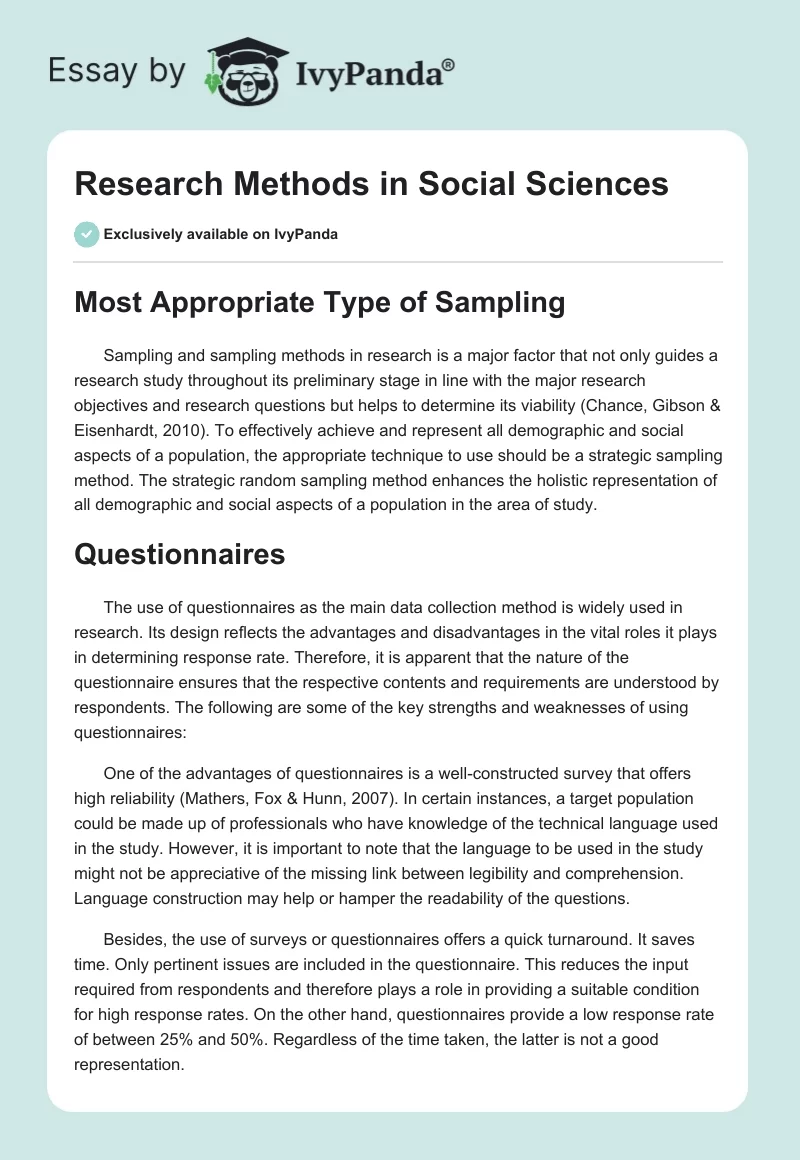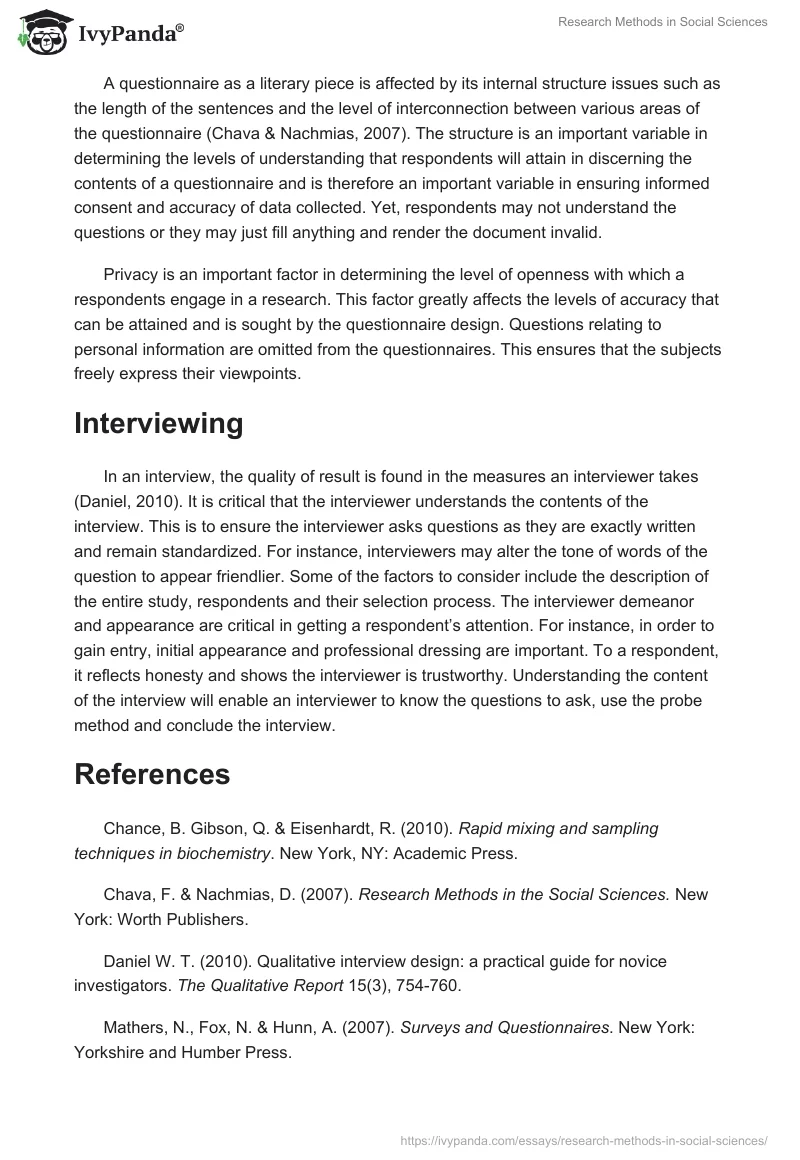Most Appropriate Type of Sampling
Sampling and sampling methods in research is a major factor that not only guides a research study throughout its preliminary stage in line with the major research objectives and research questions but helps to determine its viability (Chance, Gibson & Eisenhardt, 2010). To effectively achieve and represent all demographic and social aspects of a population, the appropriate technique to use should be a strategic sampling method. The strategic random sampling method enhances the holistic representation of all demographic and social aspects of a population in the area of study.
Questionnaires
The use of questionnaires as the main data collection method is widely used in research. Its design reflects the advantages and disadvantages in the vital roles it plays in determining response rate. Therefore, it is apparent that the nature of the questionnaire ensures that the respective contents and requirements are understood by respondents. The following are some of the key strengths and weaknesses of using questionnaires:
One of the advantages of questionnaires is a well-constructed survey that offers high reliability (Mathers, Fox & Hunn, 2007). In certain instances, a target population could be made up of professionals who have knowledge of the technical language used in the study. However, it is important to note that the language to be used in the study might not be appreciative of the missing link between legibility and comprehension. Language construction may help or hamper the readability of the questions.
Besides, the use of surveys or questionnaires offers a quick turnaround. It saves time. Only pertinent issues are included in the questionnaire. This reduces the input required from respondents and therefore plays a role in providing a suitable condition for high response rates. On the other hand, questionnaires provide a low response rate of between 25% and 50%. Regardless of the time taken, the latter is not a good representation.
A questionnaire as a literary piece is affected by its internal structure issues such as the length of the sentences and the level of interconnection between various areas of the questionnaire (Chava & Nachmias, 2007). The structure is an important variable in determining the levels of understanding that respondents will attain in discerning the contents of a questionnaire and is therefore an important variable in ensuring informed consent and accuracy of data collected. Yet, respondents may not understand the questions or they may just fill anything and render the document invalid.
Privacy is an important factor in determining the level of openness with which a respondents engage in a research. This factor greatly affects the levels of accuracy that can be attained and is sought by the questionnaire design. Questions relating to personal information are omitted from the questionnaires. This ensures that the subjects freely express their viewpoints.
Interviewing
In an interview, the quality of result is found in the measures an interviewer takes (Daniel, 2010). It is critical that the interviewer understands the contents of the interview. This is to ensure the interviewer asks questions as they are exactly written and remain standardized. For instance, interviewers may alter the tone of words of the question to appear friendlier. Some of the factors to consider include the description of the entire study, respondents and their selection process. The interviewer demeanor and appearance are critical in getting a respondent’s attention. For instance, in order to gain entry, initial appearance and professional dressing are important. To a respondent, it reflects honesty and shows the interviewer is trustworthy. Understanding the content of the interview will enable an interviewer to know the questions to ask, use the probe method and conclude the interview.
References
Chance, B. Gibson, Q. & Eisenhardt, R. (2010). Rapid mixing and sampling techniques in biochemistry. New York, NY: Academic Press.
Chava, F. & Nachmias, D. (2007). Research Methods in the Social Sciences. New York: Worth Publishers.
Daniel W. T. (2010). Qualitative interview design: a practical guide for novice investigators. The Qualitative Report 15(3), 754-760.
Mathers, N., Fox, N. & Hunn, A. (2007). Surveys and Questionnaires. New York: Yorkshire and Humber Press.


